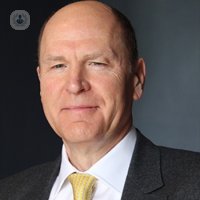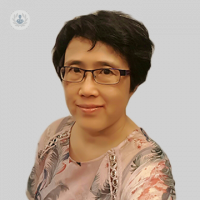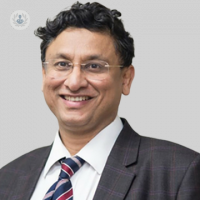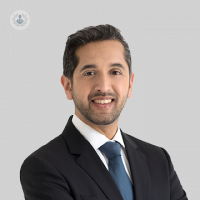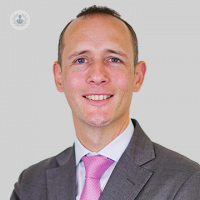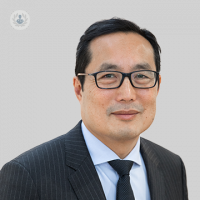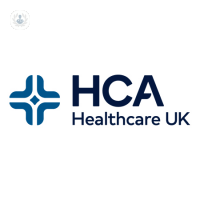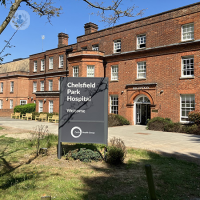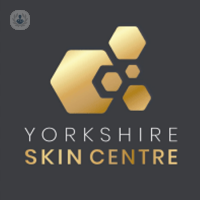What is breast reconstruction?
Breast reconstruction is performed after a mastectomy or a lumpectomy; in some cases, the reconstruction is delayed a few months or years after the breast cancer surgery.
The surgery is performed under general anaesthesia and takes about 8 hours.
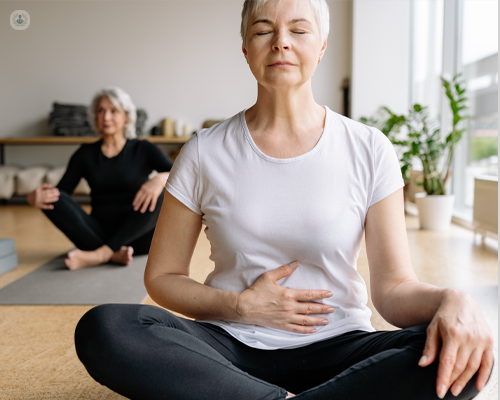
Why is it done?
Breast reconstruction is primarily done for aesthetic reasons, and leads to marked improvement in the patient’s self-image. The decision to have breast reconstruction surgery is as valid as the decision to not have it - in all cases, the decision is a personal one.
What does it involve?
There are two ways of performing breast reconstruction: with an implant or with the patient’s own tissue (autologous or “flap” reconstruction).
Breast reconstruction with an implant
Only requires surgery in the chest, hence requires fewer interventions than flap reconstruction. The implant is usually filled with a saline solution, silicone gel or a combination of both, with vegetable oil or silicone on the outside and a saline solution inside. The implant is placed under the pectoralis major muscle. The approximate duration of the implant is between 10 and 20 years.
Autologous or flap reconstruction
in this type of reconstruction, skin, fat and even muscle tissue is used to recreate the shape of the breast. The tissue, called a flap, is taken from the abdomen, back, thighs or breast. In “free flap” techniques, the tissue is completely separated from its original blood vessels, moved to the chest then combined with blood vessels in its new location. In “pedicled flap” techniques, the tissue remains attached to its original blood vessels and is moved under the skin to the chest.
The surgical result lasts for the patient’s lifetime, and this constitutes an advantage of flap reconstructions over implants. There are different types of flap and the one used depends on the patient’s body type, the size of their breasts and whether they want to become a mother in the future.
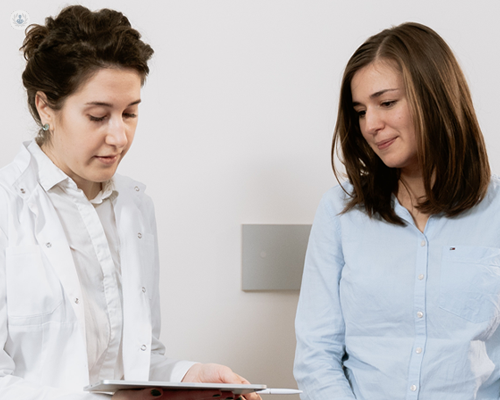
What's involved in preparation for breast reconstruction surgery?
It's important that you follow the surgeon’s instructions, e.g. to stop taking medications such as ibuprofen or aspirin. You will have to stop smoking; you will have to dress as comfortably as possible; and you will have to arrange in advance how to return home after surgery and how to manage during the first few days of recovery.
What is involved in post-operative care?
You will feel tired for a few days after the intervention, and so you should arrange for someone to help you during this time. After the first week, you will be able to take care of yourself.
11-13-2012 11-16-2023Breast reconstruction
Professor Andrew Baildam - Surgery
Created on: 11-13-2012
Updated on: 11-16-2023
Edited by: Karolyn Judge
What is breast reconstruction?
Breast reconstruction is performed after a mastectomy or a lumpectomy; in some cases, the reconstruction is delayed a few months or years after the breast cancer surgery.
The surgery is performed under general anaesthesia and takes about 8 hours.

Why is it done?
Breast reconstruction is primarily done for aesthetic reasons, and leads to marked improvement in the patient’s self-image. The decision to have breast reconstruction surgery is as valid as the decision to not have it - in all cases, the decision is a personal one.
What does it involve?
There are two ways of performing breast reconstruction: with an implant or with the patient’s own tissue (autologous or “flap” reconstruction).
Breast reconstruction with an implant
Only requires surgery in the chest, hence requires fewer interventions than flap reconstruction. The implant is usually filled with a saline solution, silicone gel or a combination of both, with vegetable oil or silicone on the outside and a saline solution inside. The implant is placed under the pectoralis major muscle. The approximate duration of the implant is between 10 and 20 years.
Autologous or flap reconstruction
in this type of reconstruction, skin, fat and even muscle tissue is used to recreate the shape of the breast. The tissue, called a flap, is taken from the abdomen, back, thighs or breast. In “free flap” techniques, the tissue is completely separated from its original blood vessels, moved to the chest then combined with blood vessels in its new location. In “pedicled flap” techniques, the tissue remains attached to its original blood vessels and is moved under the skin to the chest.
The surgical result lasts for the patient’s lifetime, and this constitutes an advantage of flap reconstructions over implants. There are different types of flap and the one used depends on the patient’s body type, the size of their breasts and whether they want to become a mother in the future.

What's involved in preparation for breast reconstruction surgery?
It's important that you follow the surgeon’s instructions, e.g. to stop taking medications such as ibuprofen or aspirin. You will have to stop smoking; you will have to dress as comfortably as possible; and you will have to arrange in advance how to return home after surgery and how to manage during the first few days of recovery.
What is involved in post-operative care?
You will feel tired for a few days after the intervention, and so you should arrange for someone to help you during this time. After the first week, you will be able to take care of yourself.


Breast reconstruction after a mastectomy
By Miss Christina Choy
2025-01-15
Following a mastectomy, many women will opt to have breast reconstruction. There are various methods of reconstructing the breast, with the two main procedures being; implant reconstruction and flap reconstruction. Miss Christina Choy talks to us about the ins and outs of breast reconstruction surgery and if there are any alternatives. See more


Breast augmentation: choosing the right options for you
By Mr Maisam Fazel
2025-01-15
Breast augmentation is a popular procedure, but no breast augmentation is the same and there are numerous choices to be made to determine the type of breast augmentation you have. Mr Maisam Fazel, a leading aesthetic surgeon, explains what these options are and the most important things to be aware of when choosing to have breast augmentation. See more
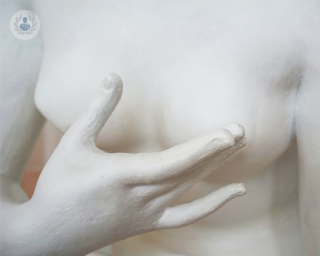

Breast reconstruction after mastectomy: DIEP, TUG, and LAP flaps
By Mr Venkat Ramakrishnan
2025-01-14
Different types of breast reconstruction are names according to where the tissue comes from in the body. Leading consultant plastic surgeon Mr Venkat Ramakrishnan, based in Brentford, discusses DIEP, TUG, and LAP flaps, the different parts of the body from where the reconstructive tissue is sourced, and compares these procedures. See more
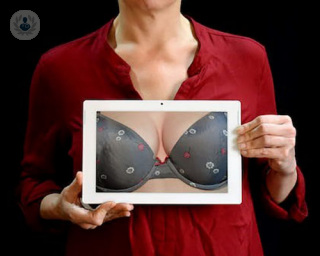

Understanding oncoplastic and reconstructive breast surgery
By Miss Fiona MacNeill
2025-01-14
In her latest online article, Miss Fiona MacNeill gives us her insights into oncoplastic and reconstructive breast surgery. She talks about what it is, the procedure, how long the procedure takes, recovery and success stories. See more
Experts in Breast reconstruction
-
Miss Christina Choy
SurgeryExpert in:
- Benign breast lumps
- Breast augmentation
- Breast reconstruction
- Breast cancer
- Mastitis
- Breast ultrasound
-
Professor Jayant Vaidya
SurgeryExpert in:
- Breast cancer
- Mastectomy
- Breast-conserving surgery
- Breast surgery
- Breast lumps
- Breast reconstruction
-
Mr Maisam Fazel
SurgeryExpert in:
- Oncoplastic and reconstructive breast surgery
- Tummy tuck (abdominoplasty)
- Gynaecomastia
- Breast reduction
- Breast reconstruction
- Breast augmentation
-
Mr Kieran Power
Plastic surgeryExpert in:
- Breast surgery
- Body contouring
- Breast reconstruction
- DIEP breast reconstruction
- Skin cancer
- Tummy tuck (abdominoplasty)
-
Mr Mark Ho-Asjoe
Plastic surgeryExpert in:
- Breast augmentation
- Breast reconstruction
- Facelift
- Liposuction
- Rhinoplasty (nose job)
- Tummy tuck (abdominoplasty)
- See all

The Outpatients and Diagnostic Centre at 30 Devonshire Street (HCA)
The Outpatients and Diagnostic Centre at 30 Devonshire Street (HCA)
30 Devonshire St, London W1G 6PU
No existe teléfono en el centro.
By using the telephone number provided by TOP DOCTORS, you automatically agree to let us use your phone number for statistical and commercial purposes. For further information, read our Privacy Policy
Top Doctors

Chelsfield Park Hospital - part of Circle Health Group
Chelsfield Park Hospital - part of Circle Health Group
Bucks Cross Rd, Chelsfield, Orpington BR6 7RG
No existe teléfono en el centro.
By using the telephone number provided by TOP DOCTORS, you automatically agree to let us use your phone number for statistical and commercial purposes. For further information, read our Privacy Policy
Top Doctors

Yorkshire Skin Centre
Yorkshire Skin Centre
1 Sizers Court, Yeadon
No existe teléfono en el centro.
By using the telephone number provided by TOP DOCTORS, you automatically agree to let us use your phone number for statistical and commercial purposes. For further information, read our Privacy Policy
Top Doctors
-
The Outpatients and Diagnostic Centre at 30 Devonshire Street (HCA)
30 Devonshire St, London W1G 6PU, Central LondonExpert in:
- Orthopaedic surgery
- Orthopaedic spinal surgery
- Musculoskeletal pain
- Musculoskeletal ultrasound
- Spinal stenosis
- Spinal injections
-
Chelsfield Park Hospital - part of Circle Health Group
Bucks Cross Rd, Chelsfield, Orpington BR6 7RG, OrpingtonExpert in:
- Vascular Surgery
- Cardiology
- Colorectal surgery
- General Surgery
- Maxillofacial Surgery
- Orthopaedic surgery
-
Yorkshire Skin Centre
1 Sizers Court, Yeadon, LeedsExpert in:
- Dermatology
- Clinical Dermatology
- Cosmetic Dermatology
- Facial aesthetics
- Most viewed diseases, medical tests, and treatments
- Menopause support
- Tubal factor infertility
- Complex endometriosis
- Fertility preservation
- Female infertility
- Ovulatory disorders
- Surrogacy
- Pelvic ultrasound
- Facial feminisation surgery
- Migraine
